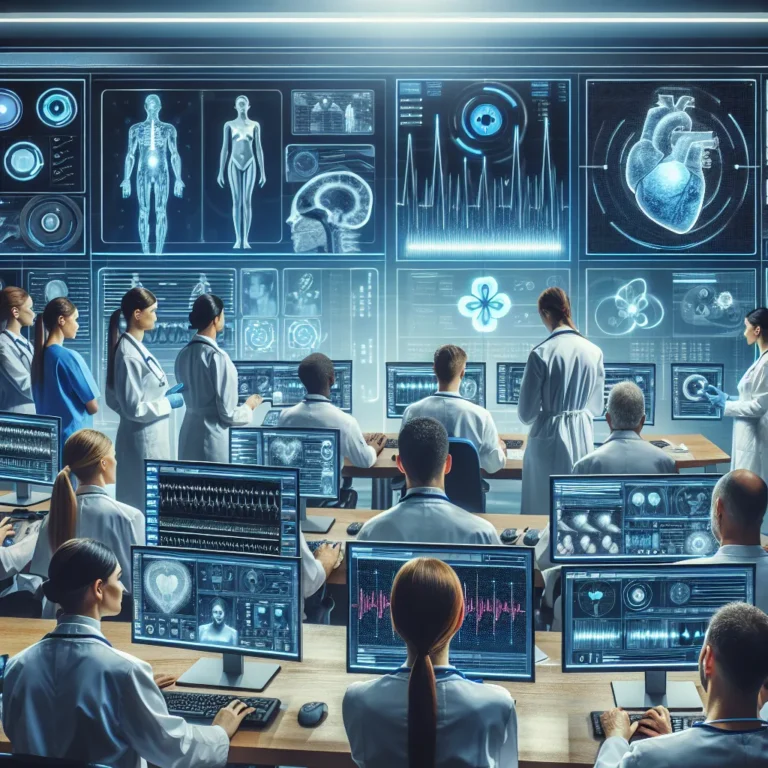
The article "Comparing Monitoring Approaches: A Comprehensive Review" provides a thorough evaluation of various monitoring methods, emphasizing the importance of aligning the chosen approach with specific organizational needs. It highlights key aspects such as cost-effectiveness, scalability, reliability, and real-time insights, offering insights into how different approaches utilize cutting-edge technologies. The review further delves into industry-specific requirements, offering a holistic understanding of monitoring landscapes across different sectors. Additionally, the article discusses the advantages and disadvantages of network-based, host-based, and application-based monitoring methods, underscoring the necessity of combining approaches to effectively address diverse operational demands. This comprehensive resource equips decision-makers and practitioners with the knowledge to optimize monitoring solutions, making it a valuable read for those seeking insights into the array of monitoring options available.

The article provides a comprehensive overview of monitoring approaches, highlighting the importance of understanding the different methods available and their unique aspects. It covers traditional monitoring methods, pointing out their reliability and limitations, such as providing only a snapshot of the system at a specific time, and being time-consuming. The article also discusses modern technological monitoring solutions, emphasizing how they have revolutionized monitoring processes with innovative approaches like IoT devices for real-time tracking, AI and machine learning algorithms for proactive monitoring and predictive maintenance, and cloud-based platforms for scalability and remote accessibility. By comparing and contrasting these approaches, businesses can make informed decisions to optimize their monitoring capabilities, making the article an essential read for anyone looking to enhance their monitoring systems.

The article "Uncovering Patterns: Leveraging Data Analysis for Business Insights" emphasizes the critical role of data analysis in today's data-driven world. It highlights the importance of uncovering valuable patterns and trends within vast datasets to make informed decisions and gain a competitive edge. The article stresses how data analysis helps in identifying correlations, trends, and anomalies, providing valuable insights into customer behavior, market trends, and operational inefficiencies. Furthermore, it discusses the predictive capabilities of data analysis, enabling proactive decision-making, strategic planning, and staying ahead in the dynamic business environment. Highlighting the impact of data analysis on various industries, from finance to healthcare and manufacturing, the article emphasizes how it empowers organizations to understand consumer behavior, forecast trends, detect patterns in market fluctuations, optimize processes, and ultimately drive sustainable growth and competitive advantage. By delving deeper into the article, readers will gain a comprehensive understanding of how data analysis is instrumental in driving business success and staying ahead in today's competitive landscape.

The article "Enhancing User Experience: The Role of Sensing Technology in Modern Devices" delves into the significant impact of sensing technology on user experience, highlighting its role in revolutionizing interactions with technology. It covers the wide range of capabilities of sensing technology, including biometric recognition, environmental sensing, and motion detection, and their contributions to user convenience, security, and comfort. The integration of sensing technology in various industries, such as healthcare and automotive technology, is discussed, shedding light on its transformative applications. The article also emphasizes the limitless potential for further enhancing user experience as sensing technology continues to advance, ultimately fostering a more intuitive and user-centric technological landscape. The companion piece, "The Evolution of Sensing Technology: From Conventional to Advanced Applications," provides a comprehensive overview of the progression of sensing technology, from its conventional limitations to the emergence of advanced applications that have revolutionized interactions with the environment. It underscores the remarkable journey of sensing technology, from its initial confined tasks to its current sophisticated capabilities, arming the reader with a deeper understanding of the foundation and evolution of sensing technology. Both articles collectively offer a compelling insight into the pivotal role of sensing technology in modern devices and the profound impact it has on user experience, making them essential reads for anyone interested in understanding the transformative power of modern technology.

The article "Infrared Sensors: Revolutionizing Remote Sensing" explores the profound impact of infrared sensors on remote sensing applications across various industries. By detecting and measuring infrared light emitted by objects, these sensors enable non-intrusive and precise monitoring of temperature variations, motion detection, and gas analysis, significantly enhancing efficiency and accuracy in fields such as environmental monitoring, industrial automation, and medical diagnostics. Furthermore, the integration of infrared sensors in unmanned aerial vehicles and satellites has expanded our capacity for environmental surveillance and disaster response, contributing to a deeper understanding of the Earth's ecosystems. The article emphasizes the pivotal role of infrared sensors in shaping the future of remote sensing and expanding our knowledge of the world around us, making it a must-read for anyone interested in the latest advancements in sensor technology.

The article "Revolutionizing Healthcare: The Impact of Advanced Sensing Technologies" explores the transformative role of advanced sensing technologies in the healthcare industry, emphasizing the benefits of wearable devices, biosensors, and remote monitoring systems. It highlights how these innovations enable real-time monitoring, early detection of health issues, and proactive intervention, ultimately empowering individuals to take control of their health. The integration of data analytics and artificial intelligence with sensing technologies has revolutionized healthcare delivery, enabling personalized medicine and improved patient outcomes. Furthermore, the article touches upon the future of medical sensing, discussing the potential of wearables, implantable sensors, AI, and non-invasive monitoring in driving further advancements in healthcare. Overall, it provides a comprehensive overview of the monumental impact and promising future of advanced sensing technologies in healthcare, making a compelling case for readers to delve into the full article.

The article delves into the essential roles of descriptive and inferential statistics in research studies, providing a comprehensive overview of their significance in data analysis. Descriptive statistics are highlighted as crucial tools for summarizing and understanding data through measures of central tendency, measures of variability, and graphical representations, providing researchers with fundamental insights into their datasets. Furthermore, the significance of inferential statistics is explored, emphasizing the importance of making inferences and predictions about populations based on data samples, using methods such as hypothesis testing, confidence intervals, and regression analysis to ensure the validity and reliability of research findings. The article encourages readers to delve into the details, showcasing how these statistical methods are integral for drawing meaningful conclusions and making informed decisions based on research data.

The article provides an insightful exploration of the advantages and limitations of remote sensing techniques in environmental studies. It emphasizes the significant benefits remote sensing offers, such as the ability to monitor vast and isolated areas, track dynamic environmental changes, and acquire data without disrupting natural habitats. However, the article also addresses the challenges, including the need for supplementary ground-based monitoring, specialized interpretation skills, and initial high costs. Additionally, it highlights the integration of remote sensing and ground-based approaches, underscoring the comprehensive understanding and enhanced accuracy it offers for environmental monitoring. The article compellingly encourages readers to delve into its full content to gain a comprehensive understanding of the crucial role remote sensing plays in environmental studies and the potential for integrated approaches to revolutionize environmental monitoring.

The article "Understanding the Role of Data Analysis in Decision Making" delves into the pivotal role of data analysis in enabling organizations to gain insights from their data, informing strategic decisions and driving growth. It emphasizes the importance of utilizing advanced analytical tools to identify patterns, correlations, and outliers within datasets, enabling proactive decision-making and mitigating risks. The second article, "Harnessing the Potential of Big Data for Business Growth," accentuates the transformative impact of Big Data while underscoring the necessity of effective data analysis in extracting valuable insights. It elucidates the ability to gain a competitive edge through personalized marketing and enhanced customer experiences. The final article, "The Art of Extracting Actionable Insights from Data," underscores the significance of not just collecting data but also the art of extracting actionable insights from it. Overall, the articles collectively emphasize the critical role of data analysis in enabling organizations to stay competitive, achieve sustainable growth, and make informed decisions, making them essential reads for those seeking to harness the power of data.

The article emphasizes the crucial role of financial analysis in making well-informed investment decisions, providing valuable insights into the financial health and performance of companies through the examination of financial statements, ratios, and other indicators. It stresses the importance of assessing profitability, solvency, and stability, as well as predicting future financial performance and identifying trends to gauge growth prospects and sustainability. Furthermore, the article highlights how a thorough understanding of financial analysis empowers investors to mitigate risks, optimize their investment portfolios, and align their choices with specific financial goals and risk tolerance levels. It also discusses how incorporating financial analysis into investment approaches can maximize returns by providing essential information, evaluating financial positions and performance, identifying market trends, and staying informed about economic indicators. This comprehensive approach is presented as essential for achieving long-term investment success and ultimately maximizing returns on investments.










